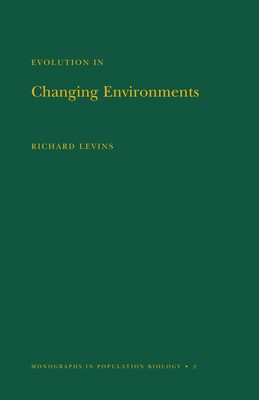
- We will send in 10–14 business days.
- Author: Richard Levins
- Publisher: Princeton University Press
- ISBN-10: 0691080623
- ISBN-13: 9780691080628
- Format: 15.6 x 21.5 x 0.9 cm, minkšti viršeliai
- Language: English
- SAVE -10% with code: EXTRA
Reviews
Description
Professor Levins, one of the leading explorers in the field of integrated population biology, considers the mutual interpenetration and joint evolution of organism and environment, occurring on several levels at once. Physiological and behavioral adaptations to short-term fluctuations of the environment condition the responses of populations to long-term changes and geographic gradients. These in turn affect the way species divide the environments among themselves in communities, and, therefore, the numbers of species which can coexist. Environment is treated here abstractly as pattern: patchiness, variability, range, etc. Populations are studied in their patterns: local heterogeneity, geographic variability, faunistic diversity, etc.
EXTRA 10 % discount with code: EXTRA
The promotion ends in 22d.00:51:31
The discount code is valid when purchasing from 10 €. Discounts do not stack.
- Author: Richard Levins
- Publisher: Princeton University Press
- ISBN-10: 0691080623
- ISBN-13: 9780691080628
- Format: 15.6 x 21.5 x 0.9 cm, minkšti viršeliai
- Language: English English
Professor Levins, one of the leading explorers in the field of integrated population biology, considers the mutual interpenetration and joint evolution of organism and environment, occurring on several levels at once. Physiological and behavioral adaptations to short-term fluctuations of the environment condition the responses of populations to long-term changes and geographic gradients. These in turn affect the way species divide the environments among themselves in communities, and, therefore, the numbers of species which can coexist. Environment is treated here abstractly as pattern: patchiness, variability, range, etc. Populations are studied in their patterns: local heterogeneity, geographic variability, faunistic diversity, etc.


Reviews